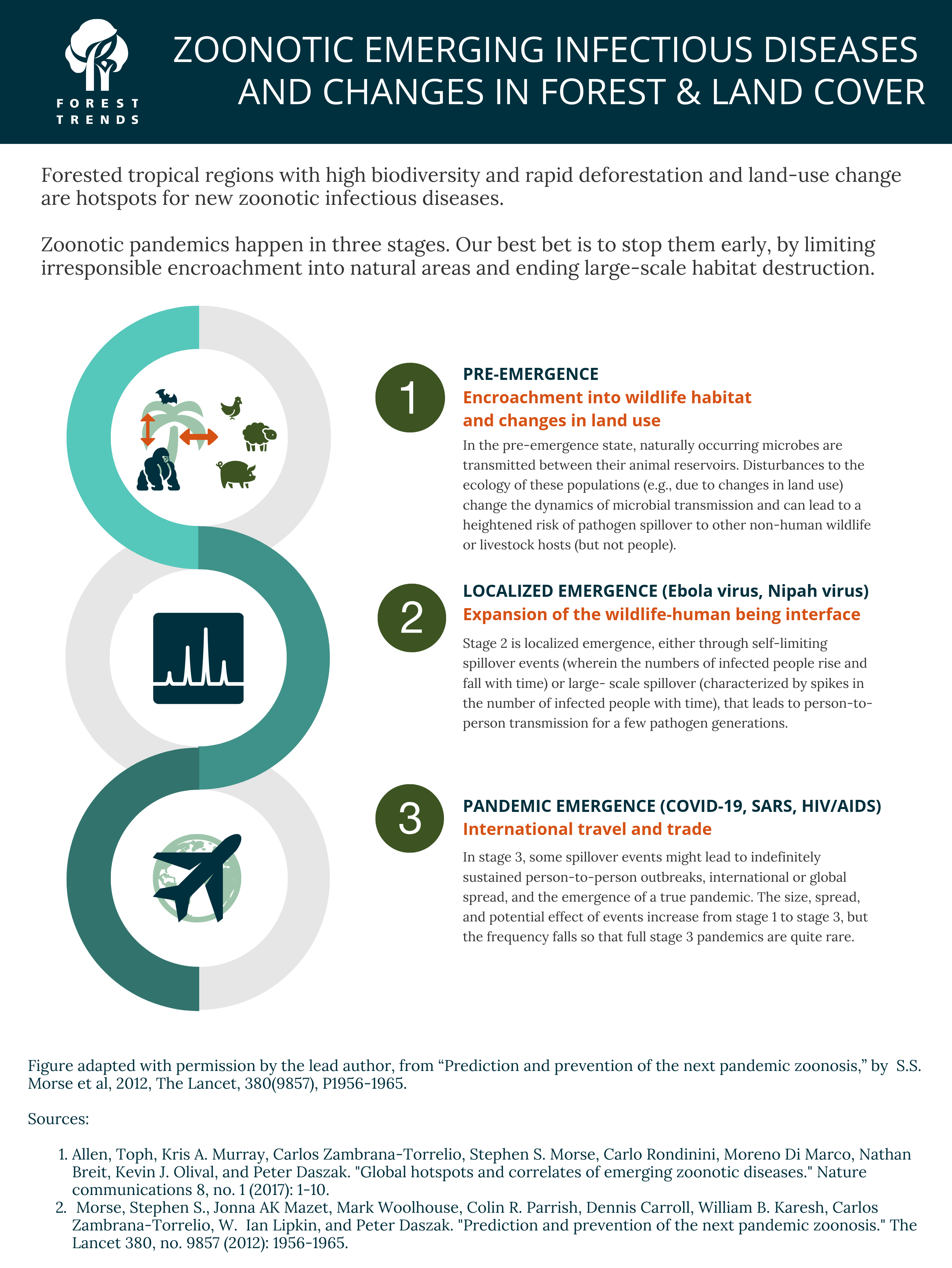It is hard to believe that less than three months ago, no one had ever heard of COVID-19. Today, there are nearly half a million confirmed cases and more than 20,000 dead. The global economy is stumbling. Our lives and jobs have been upended, and there is no clear end in sight. How did we get here?
The short answer is that we as humans are present in more and more places on this planet. As growing populations push back the wilderness frontier around the world – turning forests into cropland or pasture, building roads, digging mines, expanding the trade in wildlife – there are simply more opportunities for a new disease to make the jump from animals to humans. (Diseases transmitted this way are known as “zoonotic” diseases.)
This collision has been happening in slow motion for decades. Coronavirus is the latest in a string of new infectious diseases, including Ebola, SARS, and avian bird flu, that are on the rise as we continue destroying and degrading habitats around the world. It won’t be the last.
We run a particularly high risk of zoonotic infectious diseases originating in tropical forested regions with a high rate of forest loss and other land use change, and significant wildlife biodiversity. That risk becomes even greater where there’s a bustling illegal trade in wildlife.
Those are the places where Forest Trends’ work is concentrated, as well. We have long known we can’t solve climate change, the biodiversity crisis, or the sustainable development challenge without a healthy environment. But as these weeks have shown us, deforestation and the wildlife trade are also major public health issues, and they’re getting worse.

Zoonotic emerging infectious diseases develop in three stages, in which size, spread, and potential impacts gradually ratchet up (see infographic below).
In the “pre-emergence” state, ecological disturbance (such as human-caused land use change) and high-risk human activities like the bushmeat and live wildlife trades increase people’s exposure to novel pathogens and the likelihood of what is called “spillover,” where a pathogen gains the ability to be transmitted from its natural wildlife or livestock host to humans. Spillover is not common, but the consequences can be serious. In the second stage, pathogens are transmitted to and between humans. But diseases tend to be limited to a specific area. Infections might be self-limiting, ebbing and flowing with time, or spiking with a large number of infected people. The Ebola and Nipah viruses fall into this category. In the third, and rarest, stage, international travel and trade carry the disease globally, driving a true pandemic to emerge.
The coronavirus pandemic is a wake-up call to think about how we build greater resilience and prevention in our systems. This means getting serious about ending the illegal wildlife trade and illegal deforestation. It means making much-needed investments in sustainable development, particularly in rural and indigenous communities that are so often the frontline defenders of nature, guarding against intrusion and destruction. As Forest Trends restructures our work on the ground in light of the coronavirus, “resilience” is our watchword. That will probably be true for all of us. Stay well.
Viewpoints showcases expert analysis and commentary from the Forest Trends team.
Connect with us on Facebook and Twitter to follow our latest work.
